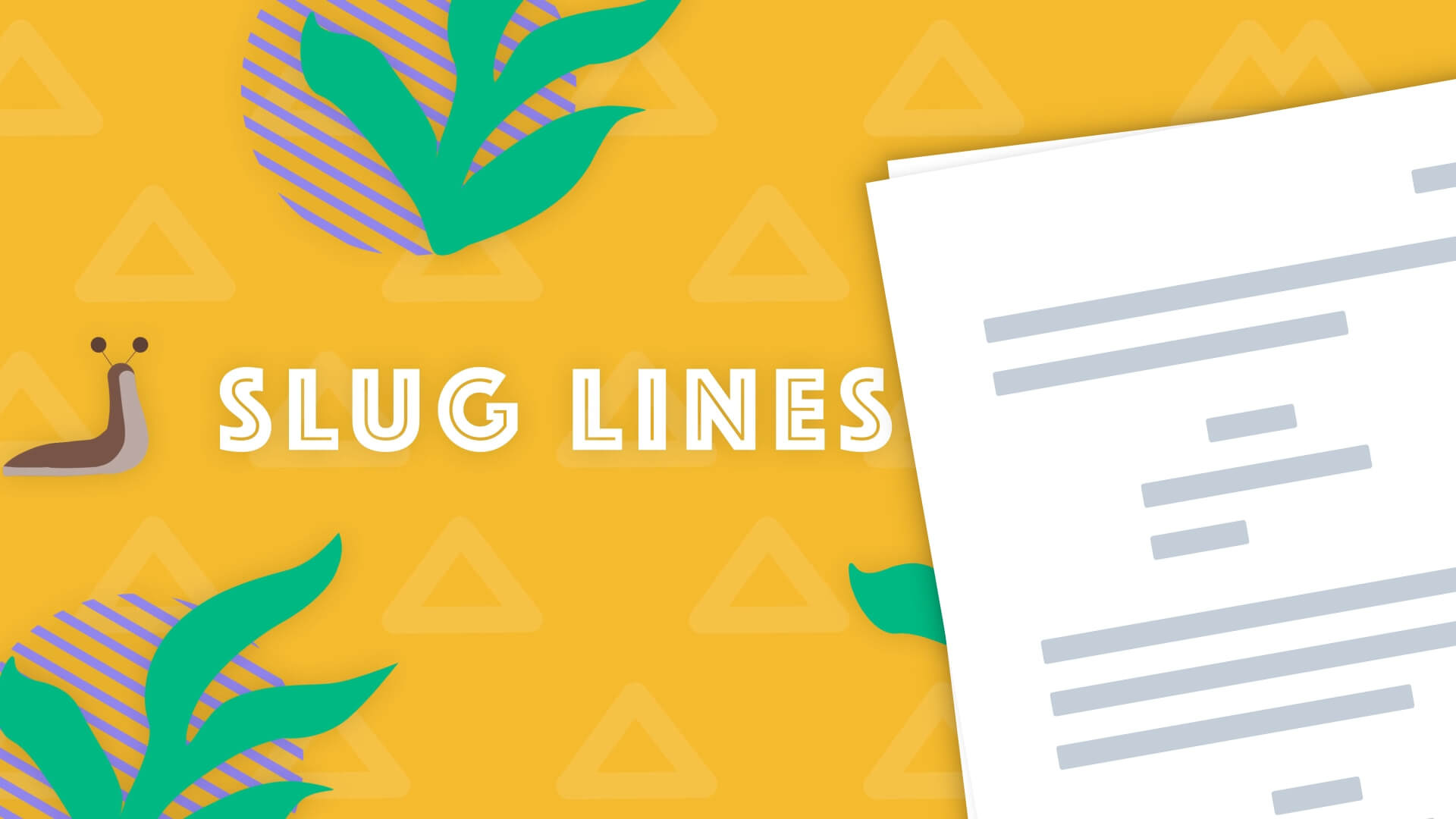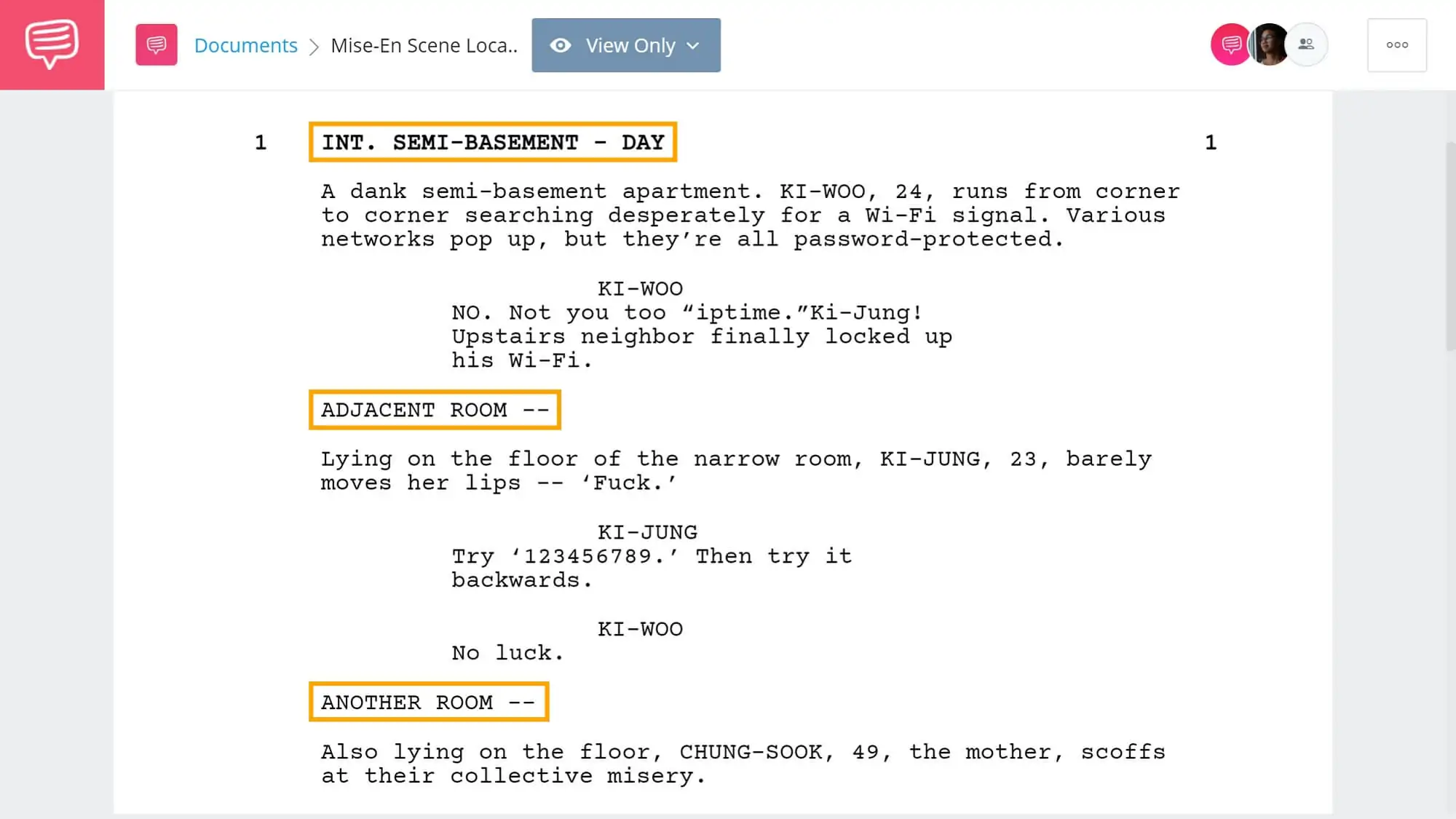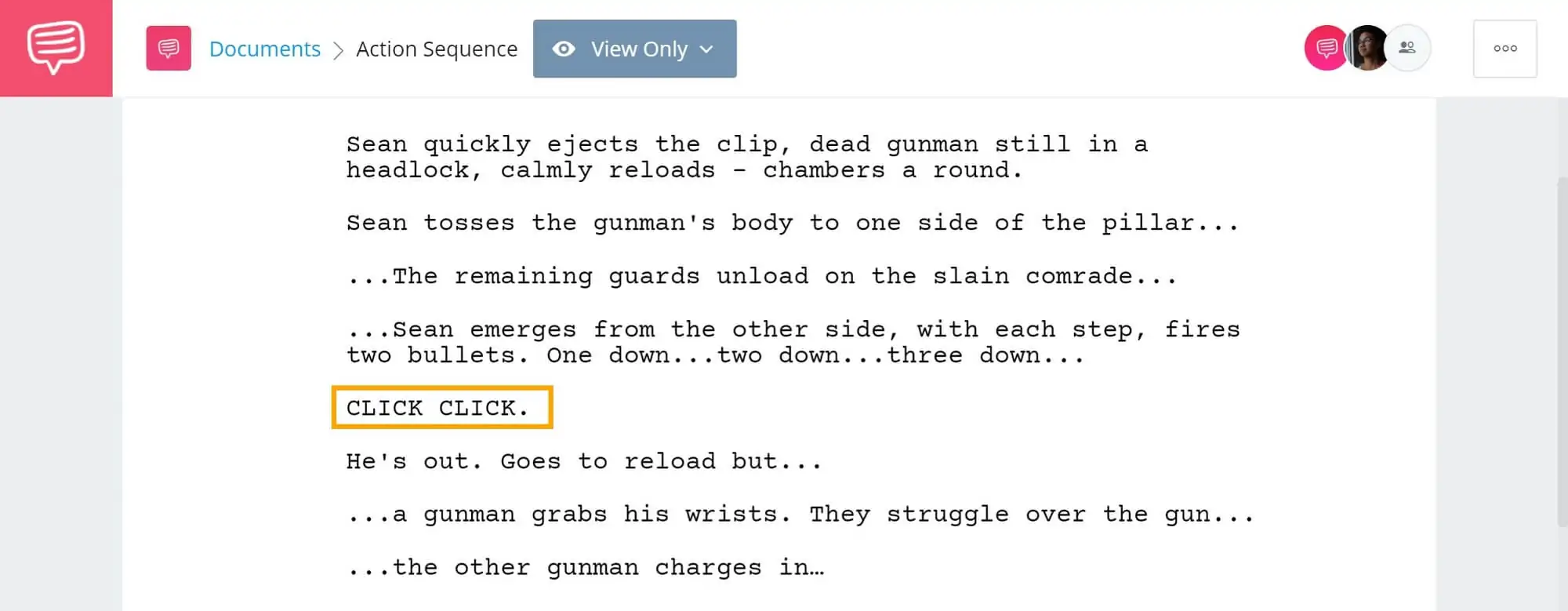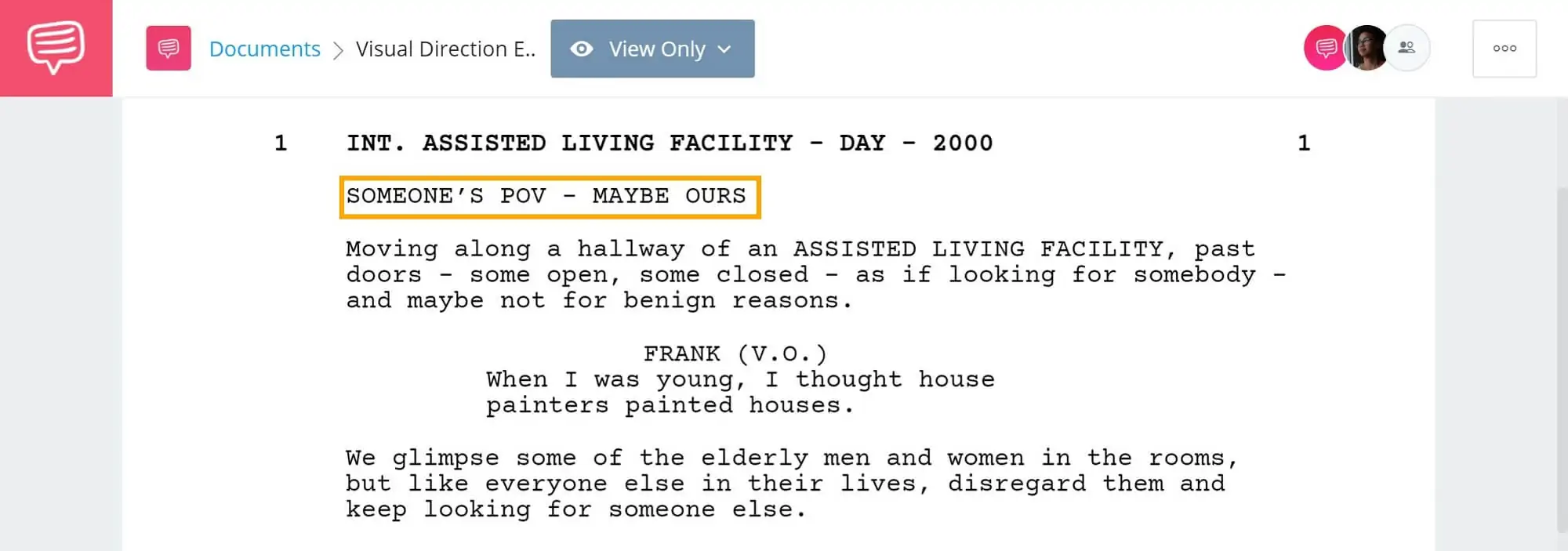While cinematography has the unique ability to visually draw an audience’s eye to something specific, screenwriters also have a unique tool to draw a reader’s attention to a specific scene element within a screenplay. The slug line is one of the best tools a screenwriter has for drawing attention and incorporating visual elements into a screenplay. So what is a slug line and what is it used for? Let’s find out.
Watch: Anatomy of a Screenplay — Ultimate Guide
What is a slug line?
First, let’s define slugline
Sluglines are incredibly effective at drawing a reader's attention to what is important within a screenplay. Let’s take a look at both its fundamental and functional uses in the slugline definition.
SLUGLINE DEFINITION
What is a slug line?
A slug line is a line within a screenplay written in all uppercase letters to draw attention to specific script information. Sluglines are their own line in a script and often break up the length of a scene while also establishing the scenes pacing.
Sluglines are often used in two different ways: master scene headings and subheadings.
Master scene headings are the standard opening line of a scene in a screenplay. They are used to communicate whether a scene occurs inside (INT.) or outside (EXT.) the location of the scene, and the time of day the scene takes place.
Subheading sluglines are written mid-scene and can be used in various ways to draw the reader's attention, all of which we will cover below.
What is a slug line used for?
- Visual direction
- Scene headings
- Action sequences
- Mid-scene location changes
What is a slug line used for?
Master scene headings
The master scene heading is one of the most fundamental sluglines when formatting a screenplay. It is responsible for starting a scene and establishing the location and time of a scene. The master scene heading, like all other sluglines, is written in all caps beginning on the left margin of the page. To learn how to write master scene headings in slug line script format, check out our video on screenplay formatting 101.
Slug line script format • Subscribe on YouTube
Within a scene, sluglines can also be used as subheadings to draw a reader's attention to different story elements. What might a screenwriter want to draw attention to? Let’s take a look at a few of the most common ways sluglines are used mid scene.
What is a slug line in a screenplay?
Mid-scene location changes
Once the master scene heading is established, screenwriters often use subheader sluglines to draw attention to a specific scene element, important detail, or simply to break up a longer scene in parts of a script.
Subheader sluglines can be used for a location change within a master location, visual directions such as a specific shot, or character names during action descriptions and sequences. No matter what type of subheader it is, they should be formatted the same.
Each subheader slug line should be written on their own line in the screenplay in all uppercase letters.
This is frequently used when characters move room to room within a house as done in the opening scene of Parasite. Let’s take a look at this slugline example to see how the opening scene with multiple rooms in the same location is written in the screenplay.
Screenwriting slugline example
Now that you see how different locations can be established under a master scene heading by using sluglines, let’s see how this script translated to the final product in Parasite.
Parasite • Slugline example
What is a slug line used for beyond dramas? When it comes to action films, they can be incredibly important for writing action sequences. Let’s take look at how sluglines are used in parts of a script to describe action.
What is a slug line in an action film?
Action sequences
Another great use for sluglines is in action sequences. There are many techniques to writing an epic fight scene, but sluglines are one of the most effective at creating the pace and rhythm that fight scenes rely on.
Sluglines within a fight scene can be the name of a character, action, or as in John Wick, onomatopoeia. Using onomatopoeia in a slug line can make a fight scene more cinematic while it remains on the page. In this scene from John Wick, the sound of an empty gun is written as a slug line to draw the reader's attention to this important plot point.
What is a slug line in an action script?
This is one of many screenwriting techniques that will help you write an engaging fight scene. Check out our video on how to write fight scenes like John Wick to learn about more techniques that will make your script’s fight scene captivating and illustrative of how great it will be on screen.
John Wick Slugline example • Subscribe on YouTube
When it comes to writer directors, some of them implement camera directions and camera shots into their screenplay. To do this, they use sluglines.
Related Posts
What is a slug line used for in screenwriting?
Visual direction
You may have heard the common piece of advice given to screenwriters to exclude any camera direction from their screenplay. While there is arguably a time in place for camera direction within a script, utilizing sluglines is a great way to give a reader visual direction without diving into the technical writing of camera direction.
Take, for example, the first few lines of The Irishman screenplay. The script opens with a slug line of visual description that immediately makes the opening scene read like a film.
Slugline example
Let’s take a look at how this visual slug line adapts to the screen in our video analysis of how Martin Scorsese opens an epic in The Irishman.
How Scorsese Opens an Epic • Subscribe on YouTube
Sluglines are one of the most fundamental and essential tools in a screenwriter's toolkit. They are great at creating a pace in a screenplay as well as drawing a reader's attention to important story elements.
While master scene headings are the most standard and universally used type of slug line, keep in mind the utility of subheadings and how they can serve your screenplay.
UP NEXT
How to write sluglines
Sluglines are one of the more logistical and obvious ways to draw attention to story elements within a screenplay. In the next post, we'll go through the different techniques and strategies that you can use while writing sluglines.



